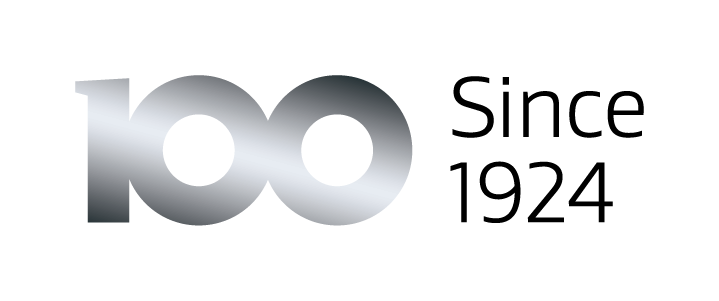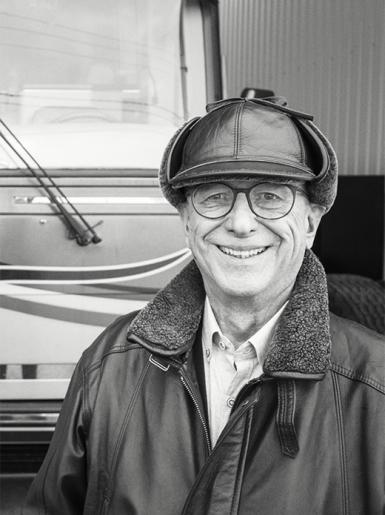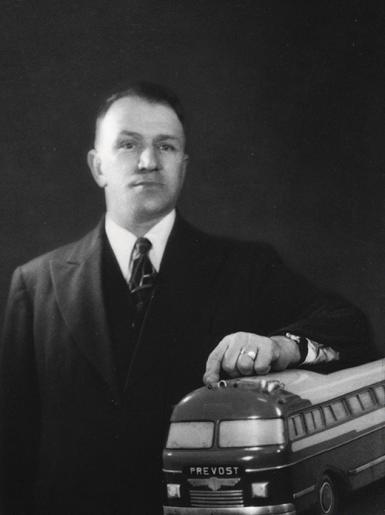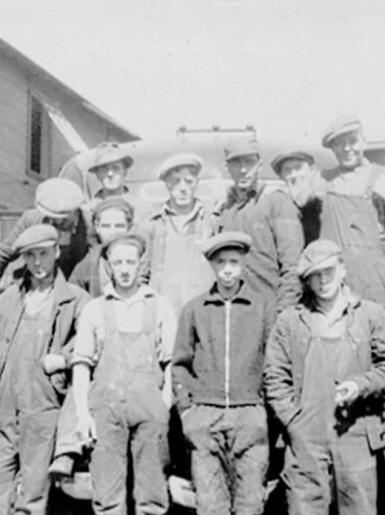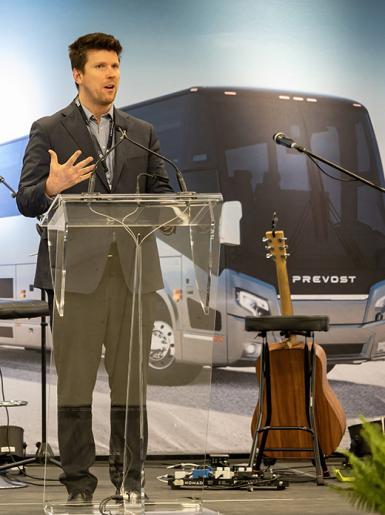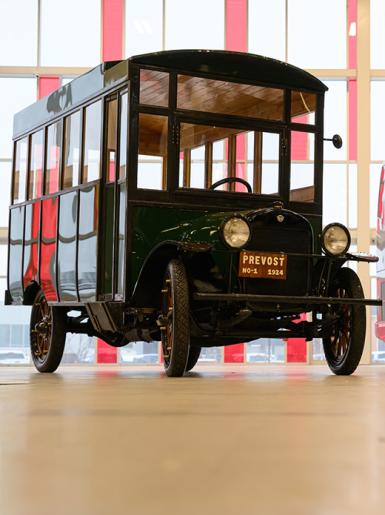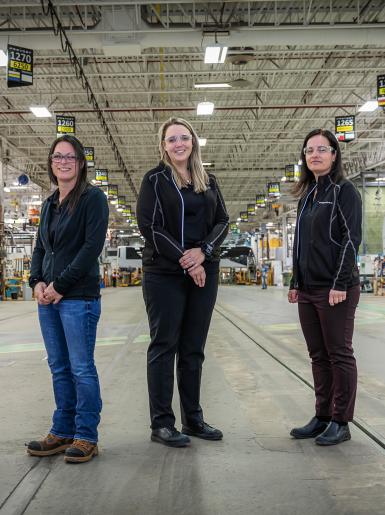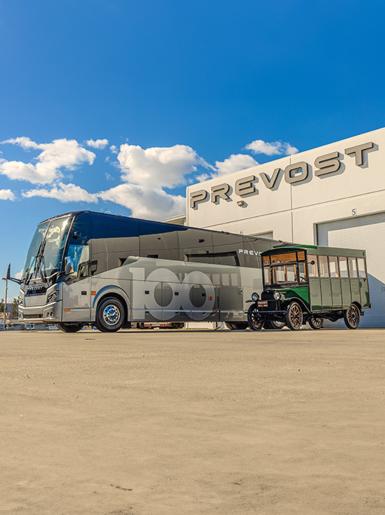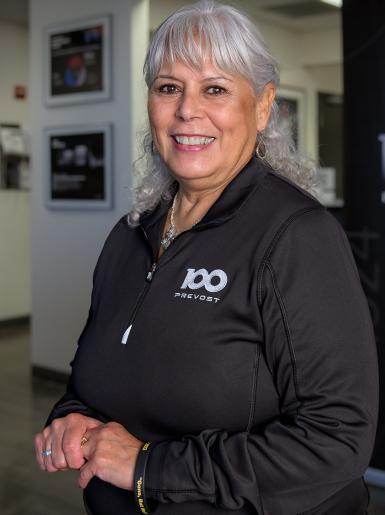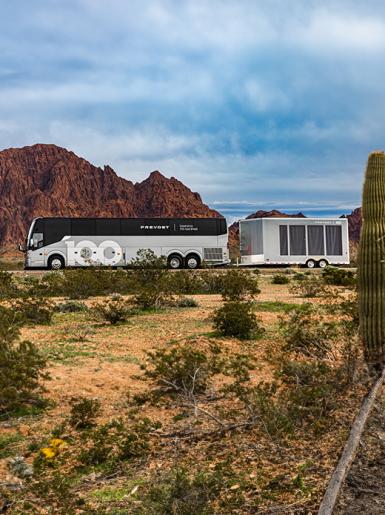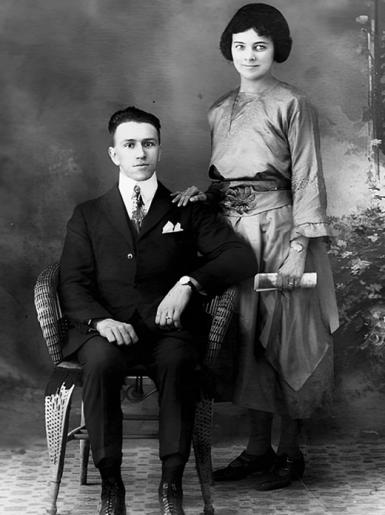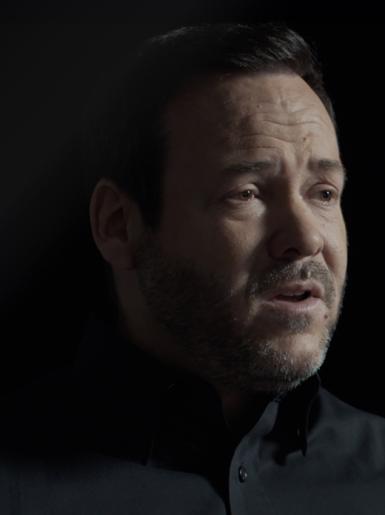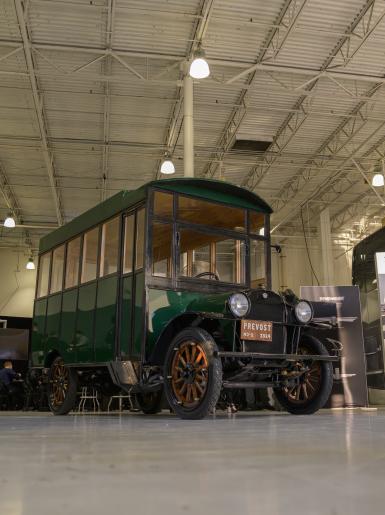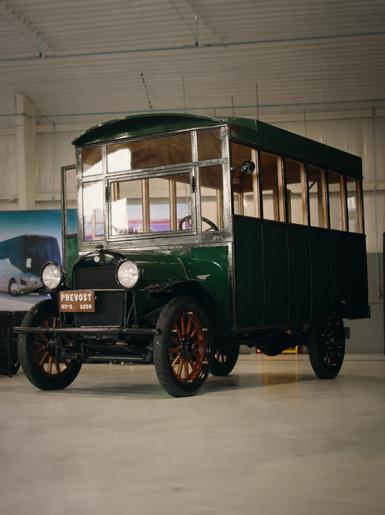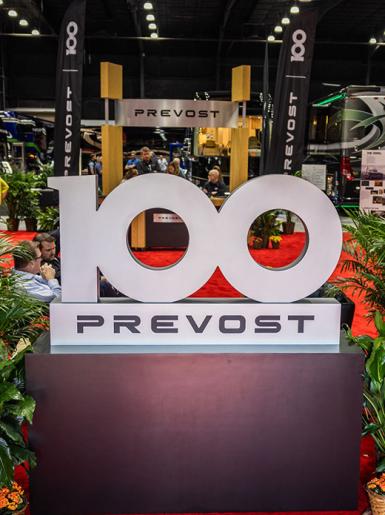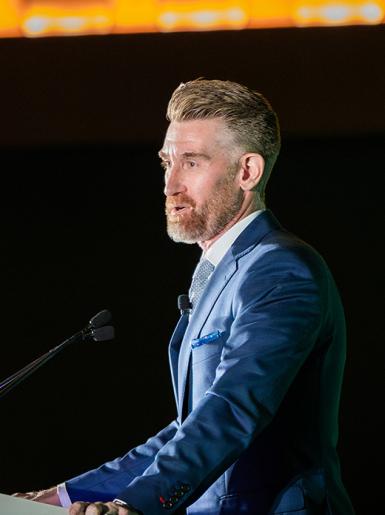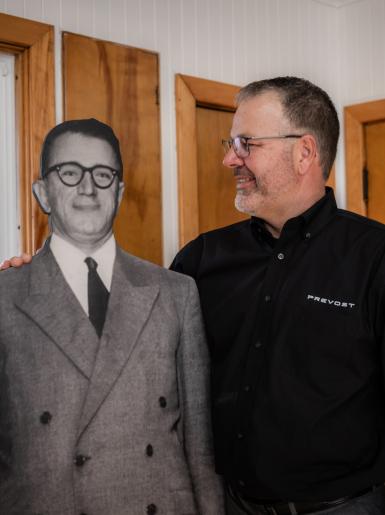History Highlights
The 1940s
Prevost thrived even as World War II defined the 1940s across the globe. Wartime production pulled North America out of the Great Depression, and for the first time, women entered the workforce to replace the men who were fighting overseas. Once those troops returned, they entered universities and flooded the labor market as record prosperity began. During this time, Prevost took steps to make bus production a separate, viable operation.


This 1942 Prevost Suburbain was one of the last wood-bodied buses built by Prevost before transitioning to all-metal models.


Interurbain: The new model included a rear engine and introduced a lower window in the passenger door—something other manufacturers would imitate decades later.
ln 1945, Prevost established bus sales agents beyond the province of Québec and for the first time, Prevost buses are marketed and sold in the rest of Canada.

Eugène Prévost, founder of Prevost, is pictured in 1946 with his handmade maquette. The maquette, originally painted green to match the company’s first customer, Autobus Drolet, was used to showcase new features to prospective customers.

Citadin and Suburbain models produced in the late 1940s featured in a Les Ateliers Prévost brochure.
In 1947, Prevost incorporated Les Ateliers Prévost Inc. as a separate bus manufacturing firm. Additionally, the Interurbain, the new model, was offered in four different sizes and became more popular than earlier cab-over-engine coaches.
The two-story building shown (with the open doors) was the original furniture factory. The large addition in the rear with the skylights was built in 1947.


The company expanded to house metal and woodworking shops, die-casting and plating facilities, and a foundry.
Additions to the original building were constructed every two years. By 1947, the plant had grown to 40,000 square feet and was able to produce its own windows and seats.
In 1948, Prevost moved to assembly-style production.


As the decade concluded, Prevost marked the dawn of an era focused on coach-only production.
